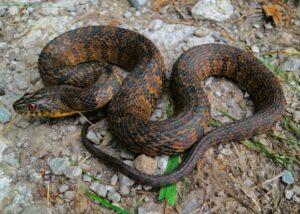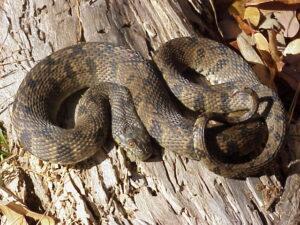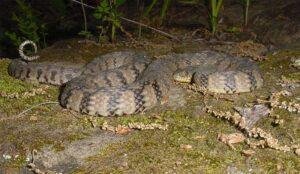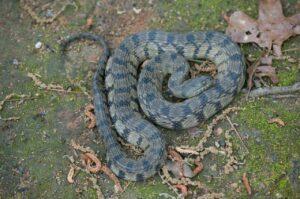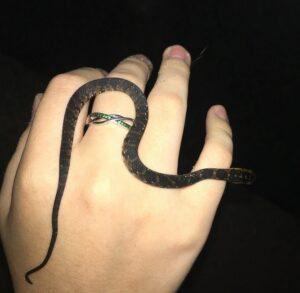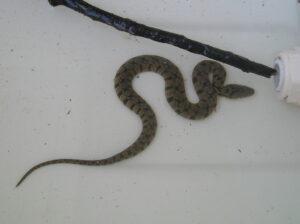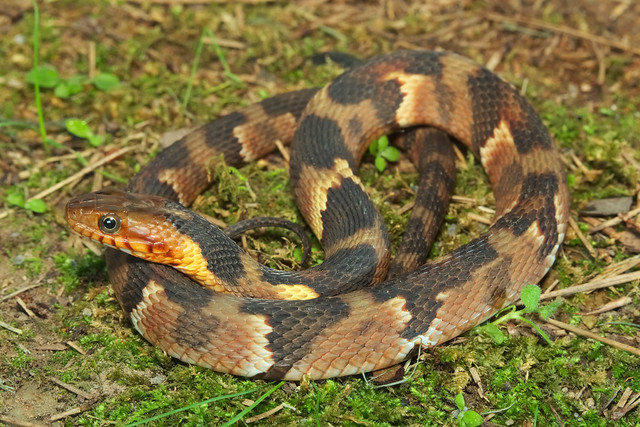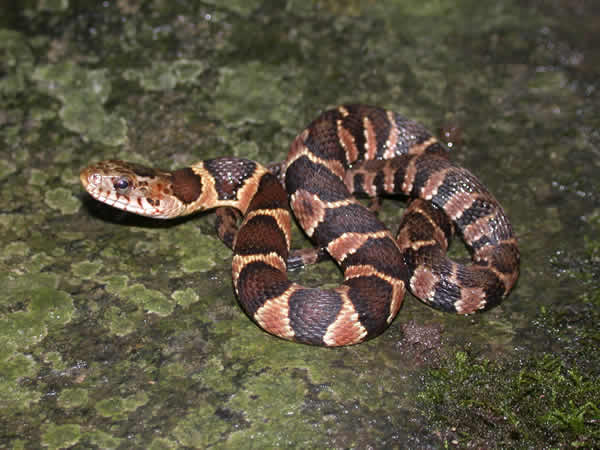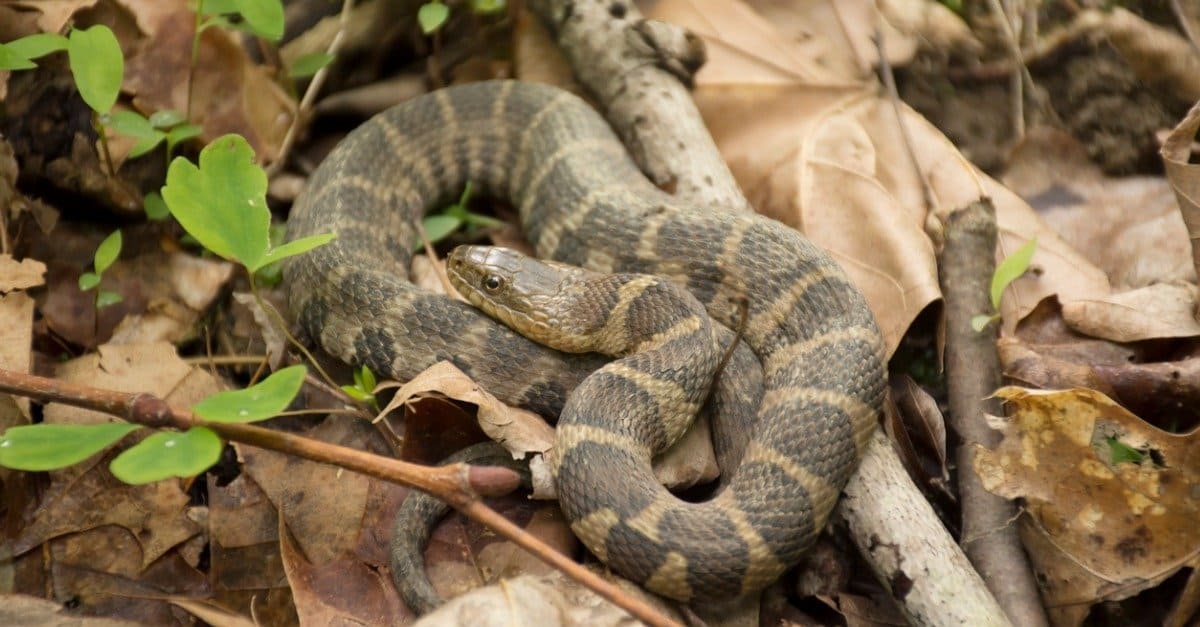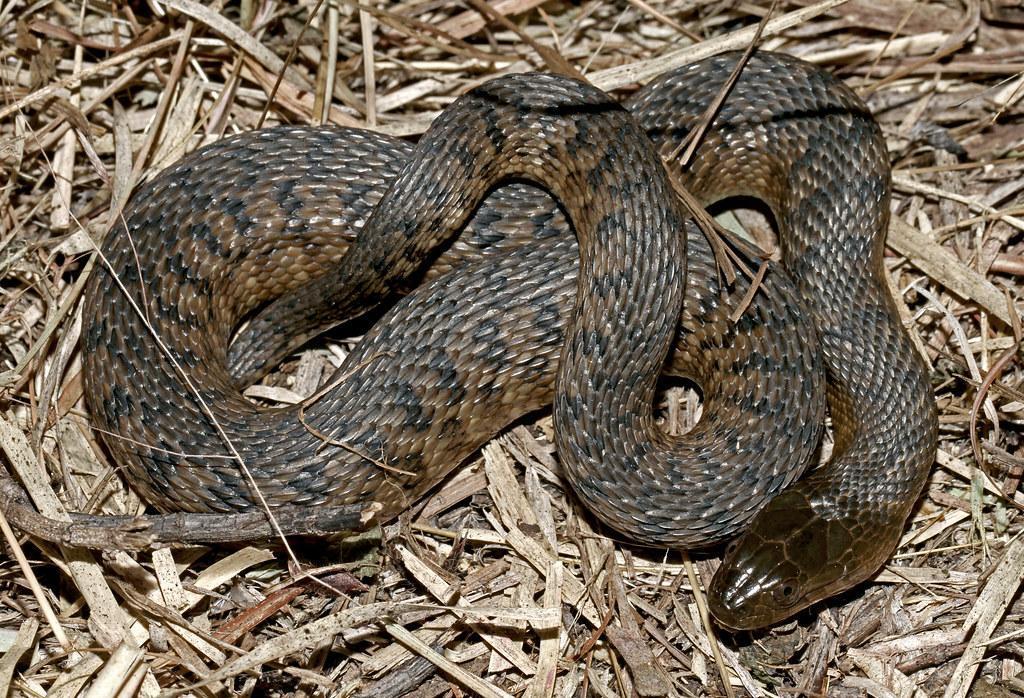The diamondback water snake is the largest North American water snake. The heavy-bodied, natricine colubrid, also known as the northern diamondback water snake, is endemic to the Central United States and Mexico. It can be identified by numerous dark diamond-shaped marks that make up a chain-like pattern on its back.
Scientific Classifications
- Suborder:Serpentes
- Family:Colubridae
- Genus:Nerodia
- Species:N. rhombifer
Conservation Status
Subspecies
This snake has three recognized subspecies.
- Nerodia rhombifer blanchardi
- Nerodia rhombifer rhombifera
- Nerodia rhombifer werleri
Description
Size
On average, the water snake reaches a total length of 30-48 inches (76-122 cm).
Color and Appearance
The water snake is predominantly dark olive green, dark brown, or brown, with a black net-like design along its back. Each spot in the pattern vaguely resembles a diamond shape. The sides of the snake often sport dark vertical bars on a lighter-colored background. The ventral side is lighter brown or yellow, in typical counter-colored style, usually marked with black blotches.
The heavily keeled dorsal scales lend a rough texture to the snake. They are arranged in 25 or 27 rows in midbody. There are usually 3 scales directly behind the eye. The adult males have multiple papillae (small raised bumps) under their chins, making the snake species distinct from all others in the US.
Are They Dangerous to Humans
When approached, the diamondback water snake quickly enters the water and swims away. If cornered, it often hisses, flares up its body, and flattens its head into a triangular shape to feign the appearance of venomous snakes to scare its attacker. Biting is its last resort if it is handled or physically molested. Though non-venomous, its bite can be painful owing to its sharp teeth meant to catch slippery fish.
This defensive behavior is often mistaken for aggression, leading it to be misidentified as venomous cottonmouths with which it shares its habitat in some places. Its body color and pattern also lead people to kill them, mistaking them for poisonous rattlesnakes. So, human ignorance is its main threat compounded by the destruction of its aquatic habitat.
Diamondback Water Snakes at a Glance
Distribution
It inhabits the Central United States, distributed among Texas, Kansas, Oklahoma, Louisiana, Iowa, Missouri, Tennessee, Indiana, Arkansas, Georgia, Alabama, and Mississippi. It mainly occurs along the Mississippi River Valley. In northern Mexico, it can be found in the states of Nuevo Leon, Veracruz, Tamaulipas, and Coahuila.
Lifespan
Very little evidence shows how long the snake lives in the wild.. In captivity, it can live for up to 10 years.
Predators
The colubrids control the population of aquatic species and are, in turn, consumed by local predators. Snapping turtles, raccoons, opossums, foxes, and other snakes feed on them. Baby diamondbacks are eaten by fish, big frogs, predatory birds, and mammals.
Diet
The diurnal hunter trolls shorelines, shallow and deep waters for their prey. They hang from branches over water and dip their heads under the water surface till they find fish or other prey. It eats toads, frogs, salamanders, crayfish, slow-moving and small fish alive.
Reproduction
Ovoviviparous (gives birth to live young from eggs that hatch inside the body)
They mate in spring, with gravid females giving birth 13-62 young in late summer to early fall. The juveniles are 8-10 inches (20-25 cm) in size and lighter in color.
Similar Species
The venomous cottonmouth or water moccasin, Agkistrodon piscivorus, has a belly with big brownish-yellow blotches throughout, and they have a black tail. The diamondback has a dark half-moon-shaped pattern only on the sides of the belly. It is also heavier and longer than the cottonmouth.
Source
media.kidadl.com, preview.redd.it, live.staticflickr.com, i.pinimg.com, floridamuseum.ufl.edu, calphotos.berkeley.edu

